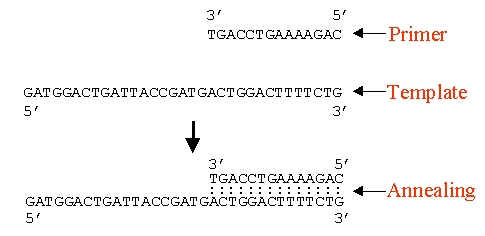The Genomics Technology Core, using the ABI 3730xl DNA Analyzer, has the capability to rapidly size DNA fragments, such as, microsatellites (random 2-6 base pair repeats) and AFLPs (amplified fragment length polymorphisms). The ABI 3730xl DNA Analyzer allows for the use of a fluorescence-based detection system that automates the process.
Fluorescent dyes are incorporated into the DNA fragment using fluorescence-labeled primers. An internal lane standard that ranges from 20-600 bases (Genescan 600 LIZ) is added to each sample for precise sizing of each fragment adjusting for lane-to-lane variation. A distinct advantage to the fluorescence-based system is the availability of four dyes allowing the multiplexing of multiple samples in a single lane. Eight samples can reliably be multiplexed in each well of a 96-well plate allowing hundreds of loci to be analyzed in a single day.
Fragment analysis orders are placed on-line using the Genomics Core's dnaLIMS system.
First time using dnaLIMS? Use this link to create an account. Further assistance is available by contacting the Genomics Core.
Core staff are available to assist with experimental design and to answer questions related to fragment analysis services. Arrangements for a meeting to discuss new or existing projects can be made by sending an email to Nathan Bivens, core director.
- Submit 3.0 µl of amplified PCR product in a 500 µl tube. Lane standard will be added to each well by core staff.
- Note: If samples are being submitted in a 96-well format, please contact the Genomics Core staff before submitting the samples to receive the correct 96-well plate required for our robotics. Sample volume of amplified PCR product in each well should be 2 µl.
- When properly submitted each order receives an order number and each sample recieves a requisition number. Label tubes with the last three digits of the requisition number on the top of the tube.
- Place samples in a plastic bag with the principle investigator's name written on the outside of the bag and the order number. (Plastic bags are available on the mini-freezer across from room 211, Life Science Center.)
- Place samples in refrigerator at Genomics Core drop-off location (in hallway across from room 211, Life Science Center).
|
For example: Order #15759 has two sample; Requisition #289573 and Requisition #289574. Each tube is labeled with the last three digits of the requisition #. Requisition #289573 Requisition #289574 |
 |
- Primer pairs should be chosen that are 15-30 nucleotides with similar melting temperatures. A GC content of 40-60% is recommended for increased melting temperature and annealing specificity. Also, primers should be checked for dimers and hairpin structures. Secondary structure check and Tm calculation can be performed using Oligo Analyzer 3.0 on the Integrated DNA Technologies web site.
- Important Note: The Genomics Core recommends using 5'-end labeling of fragments. The core utilizes the standard dye set DS-33 from Applied Biosystems. The lane standard used with this dye set is labeled with LIZ(orange). Primers are to be labeled with 6-FAM(blue), VIC(green), NED(yellow) or PET(red).

Manuals
- Fragment Analysis Chemistry Guide - This guide is intended for users who plan, conduct, and troubleshoot fragment analysis applications and data generated on the 3730xl instrument.
Software
The following software is a list of known freeware tracefile viewers. The MUGTC doesn't monitor updates of this software or make any claims to functionality. Please read the documentation to ensure compatibility with your computer operating system and to understand the features offered by each software package.
| Software | Windows | Mac | Linux | Website Link | |
| PeakScanner | Windows 7 | - | - |  |
|
